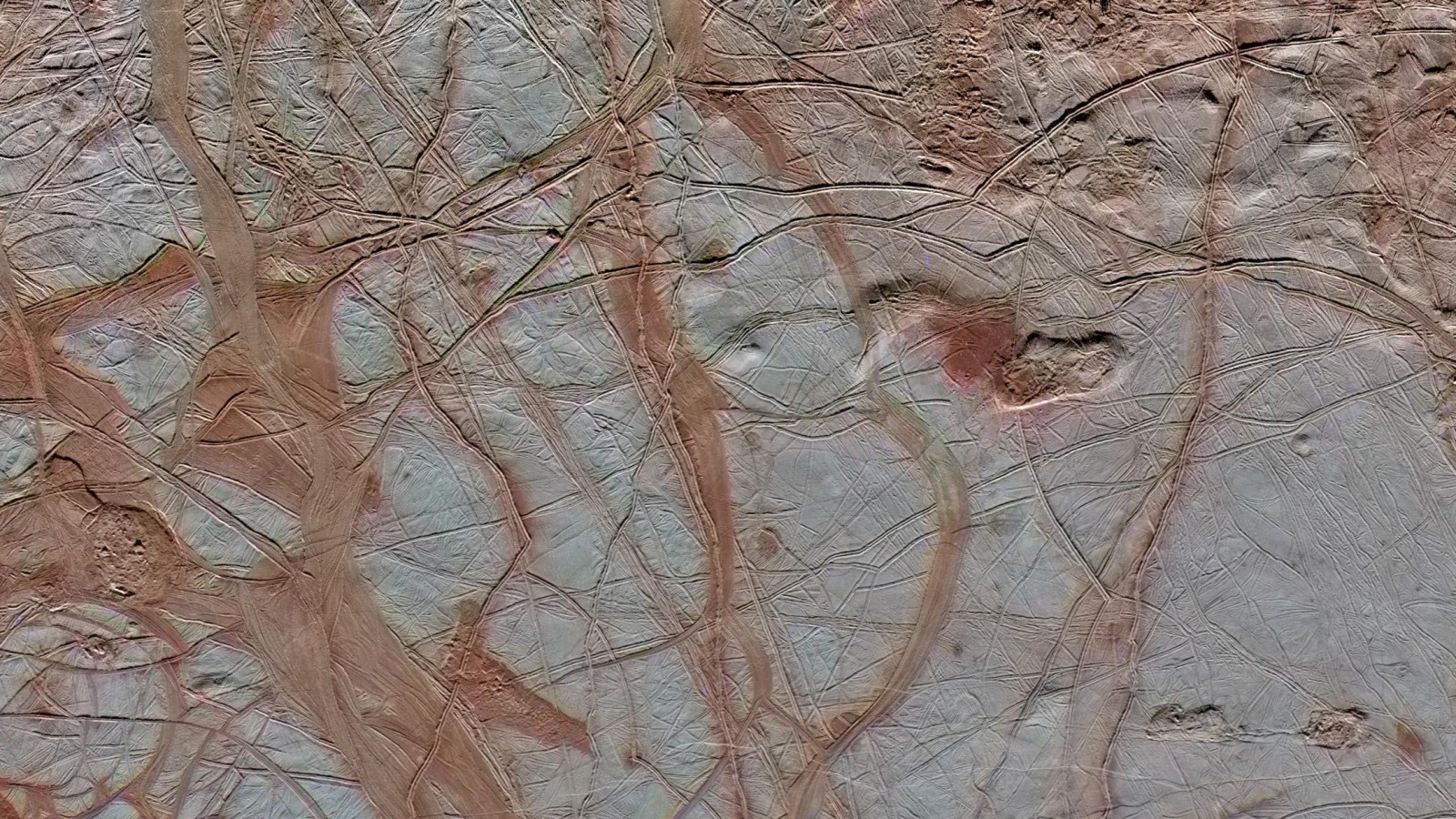'Chaos' regions of Jupiter's icy moon Europa may increase chance for life
"It provides a solution to what is considered one of the outstanding problems of the habitability of Europa."

The "chaos" regions on Jupiter's moon Europa might hold keys to the possible existence of life in the ocean under the moon's icy crust.
A fresh look at an older theory lends more weight to the idea that abundant oxygen might exist in Europa's sub-surface ocean, after drizzling from the Jupiter moon's icy shell as the jumbled terrain forms at the surface. In fact, oxygen levels in Europa's subsurface oceans might be as high as those of Earth's oceans, the new study suggests, giving credence to arguments about habitability of the icy moon.
"It provides a solution to what is considered one of the outstanding problems of the habitability of the Europa subsurface ocean," lead researcher Marc Hesse, a professor at the University of Texas at Austin's department of geological sciences, said in a statement.
We already know of oxygen on the surface of Europa, which means the new study is focused on to what extent oxygen flushes into the ocean, which is hidden underneath the moon's10-mile-thick (15 kilometers) ice crust. The ice crust is made of hydrogen and oxygen. Radiation funneling to the moon's surface from nearby Jupiter reacts with the ice, creating free oxygen along with other compounds with oxidants (such as hydrogen peroxide.)
Related: Europa, Jupiter's mysterious icy moon in photos
The new study, involving a physics-based computer simulation of the processes on Europa's surface, revealed that as the moon's ice shell partially melts, it creates a slush known as brine. The force of this slush draining through the ice generates a "porosity wave" in the ice, making the pores in the ice temporarily widen. This widening provides a pathway for the oxygen-laden brine to slide from the surface into the ocean.
The briny transport, the University of Texas said in the statement, "appears to be an effective way to bring oxygen through the ice, with 86% of the oxygen taken up at the surface riding the wave all the way to the ocean."
Get the Space.com Newsletter
Breaking space news, the latest updates on rocket launches, skywatching events and more!
The rate of delivery appears to correlate to brief moments in Europa's geologic history when the so-called chaos terrain forms on Europa. There are five known "chaos" regions on the icy moon and scientists believe they arose during warmer periods when blocks of melting ice moved on the surface before getting trapped again as fresh ice froze around them.
It's unclear as yet, however, how much oxygen is flushing into the ocean. The model assumes a "wide range of oxygen levels" being delivered to Europa's ocean over time, with magnitudes ranging by a factor of 10,000.

Only the highest set of estimates, however, has oxygen levels in Europa's ocean similar to those of Earth's, co-author and research scientist Steven Vance of NASA's Jet Propulsion Laboratory added in the statement,
But if the highest oxygen levels are the case, Vance said, “it's enticing to think of some kind of aerobic organisms living just under the ice,” he said. ("Aerobic" refers to organisms that thrive under oxygenated conditions.)
Unrelated studies from the Hubble Space Telescope have shown water vapor arising from plumes, adding excitement about habitability prospects as new missions like NASA's Europa Clipper are expected to arrive in the 2030s.
Europa Clipper's instruments include a radar sounder, provided by the University of Texas at Austin, to look for ingredients that could be crucial for life on the moon. Its investigation includes probing for the ocean, measuring ice thickness and assessing the structure of the ice and its surface properties, a NASA webpage states.
While Clipper is an orbiting mission, Vance noted the spacecraft may be able to refine estimates for oxygen on the moon. It may, however, take a landing mission to better assess how viable the briny transport may be.
A study based on the research was published Feb. 10 in Astrophysical Journal Letters.
Follow Elizabeth Howell on Twitter @howellspace. Follow us on Twitter @Spacedotcom or Facebook.
Join our Space Forums to keep talking space on the latest missions, night sky and more! And if you have a news tip, correction or comment, let us know at: community@space.com.

Elizabeth Howell (she/her), Ph.D., was a staff writer in the spaceflight channel between 2022 and 2024 specializing in Canadian space news. She was contributing writer for Space.com for 10 years from 2012 to 2024. Elizabeth's reporting includes multiple exclusives with the White House, leading world coverage about a lost-and-found space tomato on the International Space Station, witnessing five human spaceflight launches on two continents, flying parabolic, working inside a spacesuit, and participating in a simulated Mars mission. Her latest book, "Why Am I Taller?" (ECW Press, 2022) is co-written with astronaut Dave Williams.









